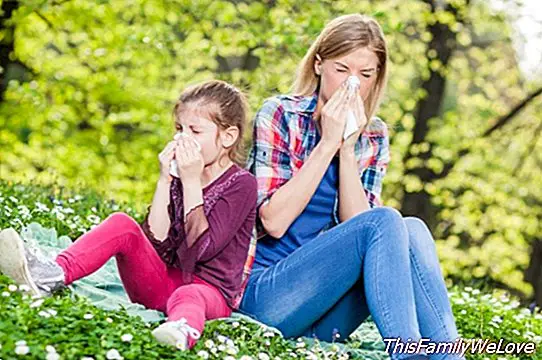Allergy affects 20 percent of children, according to the AEP

The most common allergic manifestations are asthma, rhinitis and conjunctivitis, dermatitis, urticaria and digestive symptoms. The increase in the diagnosis of childhood allergies is related to the progress of diagnostic methods, but also due to a real increase due to environmental factors related to excessive hygiene measures and environmental contamination.
The response of the AEP to children's allergy
Allergies to certain foods are the most frequent in children in the first months of life, while in the older ones are those caused by mites, pollens, animal epithelia and fungi.
"Allergic diseases are very frequent in children," says doctor Paz González pediatrician responsible for content on the website of the Spanish Association of Pediatrics (AEP) EnFamilia. A prevalence that Dr. Antonio Nieto, pediatrician, allergist and vice-president of the AEP places qualifying that "at least 20% of the child population presents symptoms potentially related to allergic problems ".
To respond to the main questions that parents have about these diseases, the AEP has posted on this website a special on "Allergies" with informative articles about the different types of allergies (pollen, food, mites ...), the symptoms they produce, the consequences or treatments.
According to Dr. González, the most common allergic manifestations in children and young people are asthma, rhinitis, conjunctivitis, dermatitis, urticaria and digestive allergy. "These can be produced by many substances that we are in contact with, such as mites, pollens, animal epithelia, medicines, food, stings, etc."
Food allergies, the most frequent in babies
Considering the age, in the first months of life the food allergies are those of greater incidence and specifically the allergy to cow's milk. "According to recent data, up to 2% of infants and children under 4 years of age manifest symptoms of allergy to cow's milk proteins," the pediatrician specifies. Other foods tending to produce allergies are eggs, fish, seafood, nuts, fresh fruits (peaches), cereals, and so on.
In this sense, Dr. Nieto adds that "it is very common for a baby to be present in the first months of life Atopic dermatitis and food allergies, manifest around the 3 or 4 years a respiratory allergy that leads to rhinitis or asthma. "This phenomenon is called by experts as 'allergic march'.
In older children the most common allergies are those caused by inhalants, among which are the mites, pollens, animal epithelia, and fungi. "While pollen allergies predominate in the center of the peninsula, in coastal areas we see more cases of allergies to mites and fungi," says Nieto.
More allergens and more accurate diagnoses
The diagnosis of allergies has experienced an exponential growth in the last decades. This is due, in the opinion of Dr. Nieto, to multiple factors: "on the one hand to progress in the diagnostic methodology, to the discovery of new allergens, to a greater awareness of the population about the existence of allergic problems, but also to a real increase in the prevalence of allergic diseases, as a consequence of environmental factors such as pollution, which affects not only directly children, but also indirectly since it has been shown that certain pollens are more allergenic when the plants of the preceding ones are exposed to higher levels of contamination ".
On the other hand, "the strict hygiene measures that are applied from birth to children in our society say that they leave "without work" a part of the immune system of minors, which seeks occupation "defending" the organism of non-pathogenic substances, such as pollens, food, etcetera, "warns this expert.
The development of new techniques has allowed "a greater precision in the diagnosis of allergies," he says. "Before, there was talk peach allergy in a generic sense; however, as a result of the appearance of the Molecular Diagnosis, available in Pediatric Allergy Units, we can now specify which peach protein would be responsible, so that this child could eventually eat peeled peaches, but not with skin because the said protein would be present mostly in peach skin ", says the doctor as an example.
Marina Berrio
Advice: DAntonio Nieto, pediatrician, allergist and vice president of the AEP




